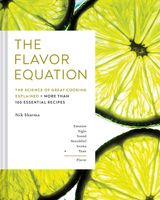Advertisement
How Sweetness Works
By Nik Sharma
Published 2020
When you take a bite out of a ripe plum, lick the scoop of ice cream in a cone, or eat a spoonful of honey, you taste sweetness. The sugars present in these foods are responsible for this sweet taste (see Carbohydrates and Sugars), but some proteins and other substances (see Amino Acids, Peptides, and Proteins) can also create that taste. When we eat sweet foods and beverages, the sugar molecules dissolve in our saliva and travel directly to our taste receptors. More complex carbohydrates like starch are broken down to individual sugars like glucose by the enzyme amylase, which we then taste as sweet. (This is an extremely mild level of sweetness in the mouth that you can try out for yourself. Refrain from eating or drinking water for at least 30 minutes, then put a small piece of bread on your tongue; you’ll pick up a mild hint of sweetness.) These sweet-tasting ingredients will travel and bind the sweetness receptors (T1R2 and T1R3; T=taste, R=receptor) with varying degrees of strength, which in turn sends a signal to our brain that tells us our food is sweet, and also how sweet.

